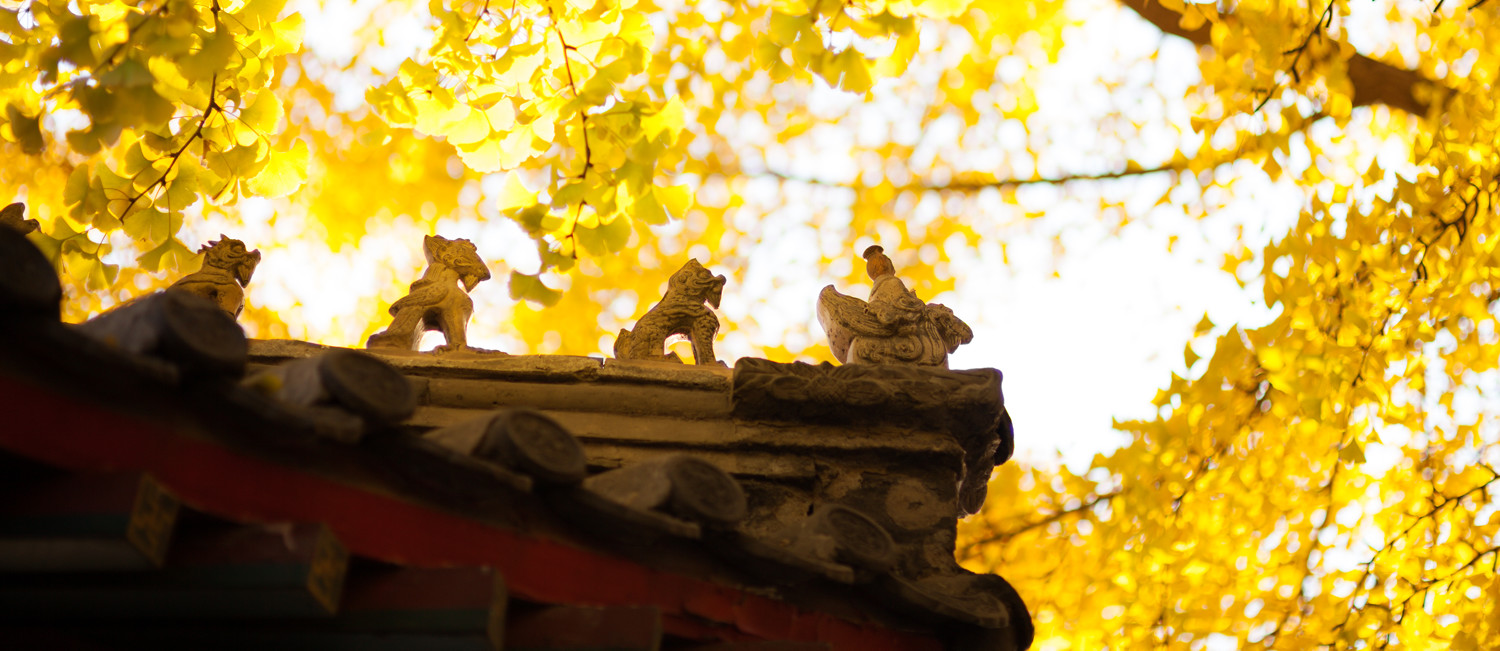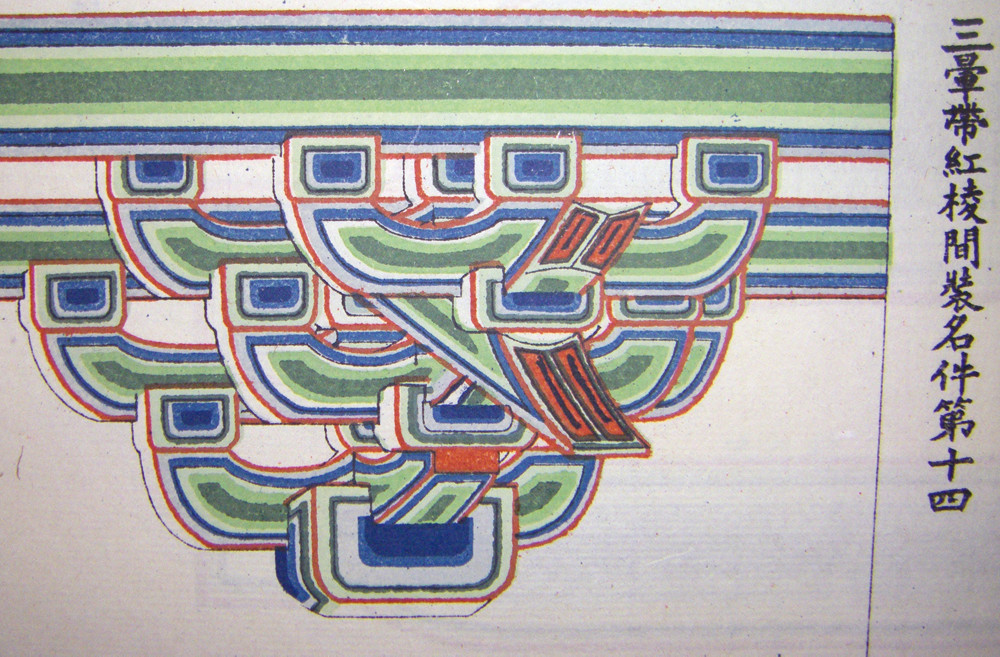Treatise on Architectural Methods
China’s history of architecture goes back centuries. The professions of architect, structural engineer and craftsmen were not as highly regarded as the Confucian scholar official. So, little written knowledge about these trades remains in existence. Architectural knowledge was mainly passed on orally, usually from father to son. During the Song period (宋朝 960-1279), structural engineering and architecture schools emerged and Chinese architects started to develop modular systems for their buildings.
Increased demand for buildings meant that there was a need to establish some valid principles to build quicker and maintain a high quality. Therefore, Li Jie (李诫) received the order from Emperor Shenzong (神宗 1068-1085) to start compiling Yingzao fashi (《营造法式》), the very first treatise on architectural methods. The new manual was completed and presented to the throne in 1100 and finally printed in 1103 under Emperor Huizong (徽宗 1101-1125).
Li’s stated goals in compiling this building manual were twofold: to reduce corruption and to introduce standards in architecture. Until then, no proof of quantity and quality of the building materials existed. The treatise had to be used by both the officials who commissioned buildings and the builders who built them. The manual covers topics ranging from foundations to painted ornaments as well as the estimations of materials and labour. And yet, the main body of the work goes to extreme lengths to outline the regulations on the units of measurement, design standards and construction principles with structural patterns and building elements illustrated in the drawings.

The Yingzao fashi can also be regarded as a summary of architectural history dating back to the Tang Dynasty (唐朝 618-907) with its earliest wooden buildings. The main hall of the Nanshan Temple (南山寺) of Wutai County (五台县), Shanxi (山西), for instance, was constructed in 782 in full accordance with the prescription that was later laid down in Yingzao fashi. The structure of this hall is a central feature in this extensive treatise, occupying two out of the three building categories.
The first category of buildings is Palatial Halls: all large-size buildings with a depth of eight to ten rafters, whereby one rafter is the space between two columns, sometimes also called bays. The wood structure of halls of this category was composed of columns, corbel brackets which support the beam framework in a decorative manner. The inner and outer columns were equally long, giving the Palatial Halls its outstanding structural feature.

The secondary category of building is Halls. The greatest difference to the Palatial Halls lays in the fact that the length of the principal middle columns in the hall increased with the rise of the roof. In other words: the principal columns were made higher than the peripheral columns by one or two purlin-depths. This meant that the roof needed a lot more tiles. The back ends of the extension beams in the hall were also inserted into the principal columns. This type of structure was mainly used for small or medium-sized buildings.
The third and final category is the beam-column structure. Usually adopted for galleries, domestic houses and shops, no corbel brackets were used. Its roof framework was similar to what was later known as the minor-grade woodwork construction. Columns more generally took up considerable space in the treatise, going into detail on methods to make columns.
Given that the timber used to construct these columns took centuries to grow, architects faced a problem with the increased demand for larger buildings: how could they construct columns with limited timber? Yingzao fashi offers useful practical advice on a whole host of columns and beams, ranging from so-called jointed columns, encased columns to pieced beams made out of wood. Pieced beams, for instance, were made of two or three, sometimes even more pieces of timber and secured by dovetails at the joints by a mortise and tenon. Encased columns were made from timber of larger size and a number of smaller pieces of wood encasing it all around with fastening iron hoops used outside. As with encased columns, jointed columns were made when a column of an excessive length was required. It was made by first jointing several sections of wood forming a core, and then encasing the core timber with smaller pieces of wood all around. Thus it was good in compression strength but weak in bending resistance and was only used for columns and never for beams.

The treatise deliberates, too, on the protection and preservation of such structures, especially from rot and decay. Advice is given to set wooden columns on a stone base so as to protect them against water and rot. As the columns were not rammed into the earth, they sat freely on a stone base, making them flexible in the event of an earthquake. Another method to prevent rotting was painting, which effectively prevented the wood from cracking and rotting. Not just to prevent rotting, though, painting was used for decorative purposes and divided into two large groups: colourless and coloured paints. Colourless paints are transparent paints, while coloured paints are made up of mineral and chemical pigments. Red, yellow, blue, white, black and green are the six basic colours. Red belongs to the buildings of the throne with yellow tiles on the roof, and set up on a white stone platform. Beneath the eaves, the beams were painted in dark green and blue, often with a gold trim around the dark green.
This eleventh-century building manual with its comprehensive guidelines and exquisite hand-drawn illustrations offers today’s reader breathtaking insights into the advanced architectural world of ancient China. Yingzao fashi proves just how advanced the Chinese were at that time in the construction of then modern buildings. Ten centuries later, at the start of the twenty-first century, China has become fertile ground for leading architects willing to construct some of the world’s most ambitious buildings. Any architect today wishing to gain inspiration from the old would do best to consult Yingzao fashi for its foresightedness, its attention to detail and its quintessential features that are nothing less than Chinese.
By Wolfgang Pehlken

 Share on Facebook
Share on Facebook Share on Twitter
Share on Twitter Share on LinkedIn
Share on LinkedIn